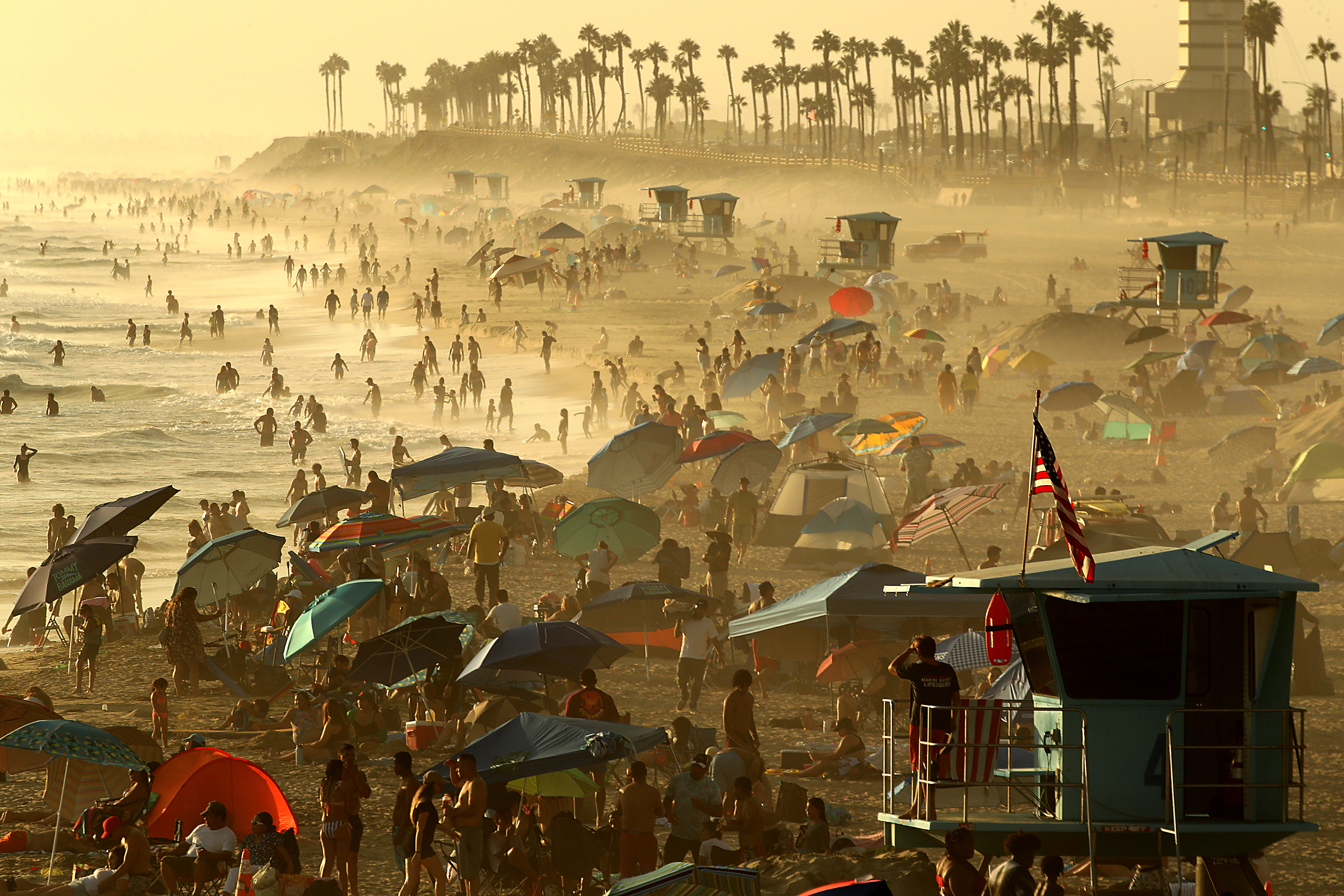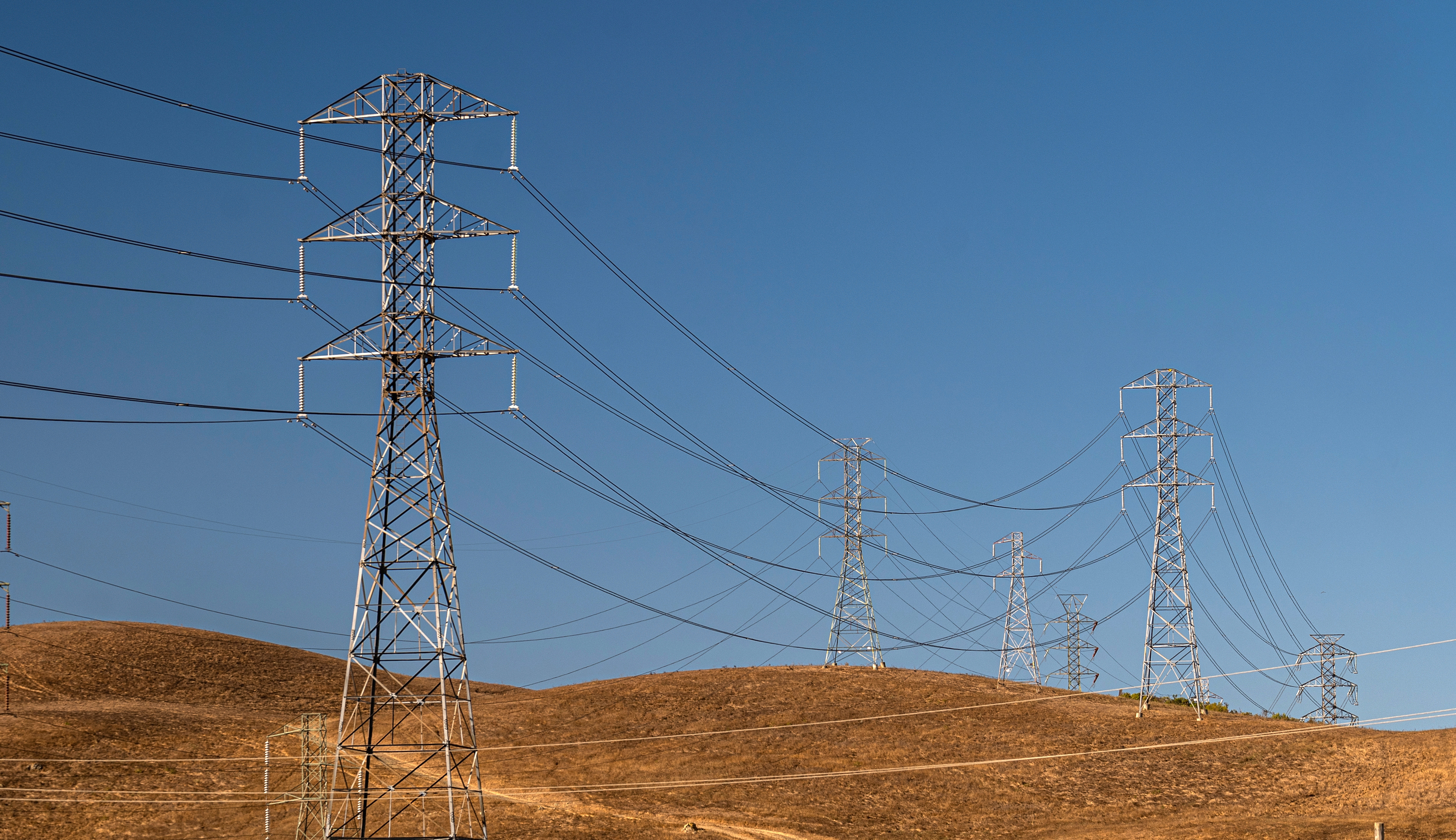What to Know
- California was on the verge of widespread rotating blackouts Tuesday afternoon when demand for electricity reached an all-time high.
- Gov. Newsom credited 27 million alert messages sent to phones statewide calling with helping to stave off power outages.
- A Flex Alert was in effect from 4 p.m. to 9 p.m. Friday.
Power grid managers called on Californians to once again limit power use Friday as a weeklong heat wave grips the nation's most populous state.
A Flex Alert goes into effect from 4 p.m. to 9 p.m. Friday. The alert from the California Independent System Operator is a request to voluntarily conserve power during peak hours.
California was on the verge of planned outages when CAISO issued an Energy Emergency Alert 3 Tuesday afternoon. The ISO alert means demand, much of it from air conditioners, might pass supply and rotating blackouts might be ordered to ease strain on the grid.
Get Southern California news, weather forecasts and entertainment stories to your inbox. Sign up for NBC LA newsletters.
CAISO said the peak electricity demand on Tuesday hit 52,061 megawatts, far above the previous high of 50,270 megawatts set on July 24, 2006. There were no rotating outages over large areas, but some outages were reported in the San Francisco Bay Area cities of Palo Alto and Alameda for about an hour.
Demand dropped later in the evening as businesses closed, and CAISO ended the Energy Emergency Alert 3 at about 8 p.m. CAISO tweeted that "consumer conservation played a big part in protecting electric grid reliability."
Alert messages were sent to millions of cell phones, urging Californians to cut power use. Gov. Gavin Newsom said the messages worked well, but expressed concern about over-using the message system.
Newsom, speaking to reporters in Beverly Hills, said 27 million messages were sent statewide calling for immediate power conservation.
"Within minutes, we saw a roughly 2,600-megawatt reduction in usage," Newsom said. "Had that not happened, we would have had some episodic load reduction. That was extraordinary.''
Excessive heat warnings remain in effect throughout Southern California. Relief, but not much, is expected this weekend when temperatures take a slight dip.
California and other Western states are still struggling through one of the hottest and longest September heat waves on record. Temperatures began soaring last week and the National Weather Service warned that dangerous heat could continue through Friday, despite some slight moderation.
Sacramento hit an all-time high Tuesday of 116 degrees breaking a 97-year-old record.
Scientists say climate change has made the West warmer and drier over the last three decades and will continue to make weather more extreme and wildfires more frequent and destructive. In the last five years, California has experienced the largest and most destructive fires in state history.
When will the heat wave end?
A changing weather pattern caused by Tropical Storm Kay moving up the coast won't bring much relief from the heat. Temperatures will remain in the 90s and triple-digits Thursday before only a slight cooldown this weekend.
Excessive heat warnings remain in effect for much of Southern California. A high wind watch is in effect for parts of San Bernardino and Riverside counties.
Southern California has seen temperatures soar above 100 degrees every day since Wednesday of last week. A record high temperature was reported in Sandberg on Wednesday. It was 99, breaking the record of 97 set in 2018.
The temperature reached 103 in Anaheim on Wednesday, breaking a record high of 100 for the day set in 2011.
A number of high minimum temperatures were set throughout Orange County on Wednesday. The minimum temperature was 75 in Anaheim, tying a mark set in 2020. It was 73 in Santa Ana, breaking the mark of 71 set in 2020.
Temperatures will remain near or slightly below normal next week.
What can I do to help prevent rotating power outages?
CalISO offers the following power conservation tips when a Flex Alert is issued.
- Turning off unnecessary lights.
- Using major appliances before 3 p.m. and after 10 p.m.
- Setting air conditioner thermostats to 78 degrees or higher.
- Use fans and keep drapes drawn.
How will I know when there's an urgent need to conserve power?
Cal ISO has a notifications page where you can sign up to receive updates. Check you local utility's page for other alerts. You also can check California's power forecast here.
What happens if Flex Alerts aren't enough?
Californians are familiar with Flex Alerts — a call for power conservation issued by Cal ISO in anticipation of high power demand. They usually happen during widespread extreme heat. The system operator also may issue the following alerts if the voluntary calls to conserve do not appear to be working.
- Energy Emergency Alert 1: Real-time analysis shows all resources are in use or committed for use, and energy deficiencies are expected. Market participants are encouraged to offer supplemental energy and ancillary service bids. Consumers are encouraged to conserve energy.
- Energy Emergency Alert 2: Cal ISO requests emergency energy from all resources and has activated its emergency demand response program. Consumers are urged to conserve energy to help preserve grid reliability.
- Energy Emergency Alert 3: ISO is unable to meet minimum Contingency Reserve requirements and controlled power curtailments are imminent or in progress according to each utility’s emergency plan. Maximum conservation by consumers requested.
In August 2020, Cal ISO issued a Flex Alert followed by its first Stage 3 Alert since 2001. Eventually, the grid stabilized and utilities began restoring electricity that had been taken out of service. Temperatures around the state hit triple digits in many areas, and air conditioning use increased. In addition, cloudy weather from the remnants of tropical weather system reduced power generation from solar plants.
Why shut off power on a rotating basis?
Rotating outages can be a significant inconvenience, but they are a controlled measure used to manage emergencies. Without them, a widespread and more prolonged power disruption might result.
When was the last time California had rolling power outages?
Several hundred thousand Californians lost power in rolling blackouts in August 2020 amid hot weather. The state avoided a similar scenario last summer. Previously, the state ordered rolling outages during an energy crisis in 2001. Blackouts occurred several times from January to May, including one that affected more than 1.5 million customers in March. The cause was a combination of energy shortages and market manipulation by energy wholesalers, infamously including Enron Corp., that drove up prices by withholding supplies.
What happens when rolling blackouts are ordered?
The California Independent System Operator declares a Stage 3 power emergency and directs utilities around the state to shed their power loads. If your local utility determines a need to shut off power, the blackouts typically last about an hour.
After Cal ISO issues the power outages alert, it's up to local utilities to manage load. In Southern California during the summer of 2020, SoCal Edison announced that it had been instructed to begin rotating, one-hour service interruptions. Pasadena Water and Power also warned residents about the one-hour outages, while Anaheim officials said their outages would not last more than 15 minutes. The Los Angeles Department of Water and Power said the rolling blackouts did not affect residents of the city during the 2020 heat wave.
"The investor-owned utilities are responsible for determining the location and duration of the rotating outage within their service areas," according to Cal ISO. "Because the utilities are responsible for managing the rotating outages, consumers experiencing a power outage need to contact their electric power provider to learn when power will be restored."
When rotating power outages are declared, residents should check timing with their local utility company.
How can I prepare for a power outage?
Below, you’ll find a few tips to get you through a power outage.
- Update your contact information with your local energy company.
- Have a back-up charging method for your phone and other devices.
- Keep hard copies of emergency numbers and other important information.
- Stock your emergency kit with flashlights, batteries, cash and first-aid supplies.
- Do you know how to manually open your garage door? Try it out.
- Save operation of power-heavy appliances, such as dishwashers, washing machines and dryers, for early-morning and late-evening hours.
- Limit the opening and reopening of refrigerators.



